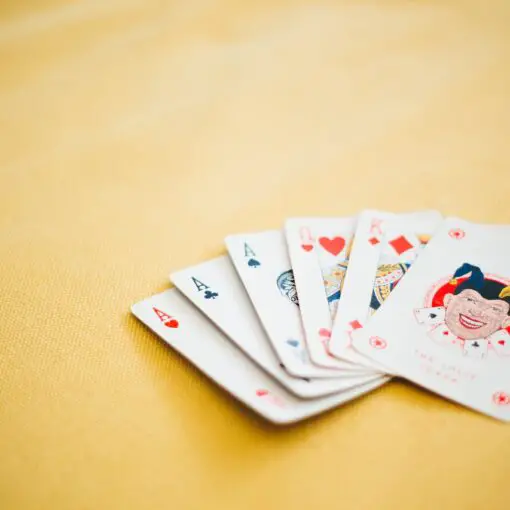Introducing children to critical thinking at an early age is essential for their cognitive development. Engaging in thought-provoking activities not only helps sharpen their mental skills but also nurtures their curiosity and creativity. One effective approach to teaching critical thinking is to use children’s books as a resource.
Children’s books on critical thinking provide a fun and interactive way for kids to explore complex ideas and develop their logical thinking abilities. They encourage the young ones to question, analyze, and evaluate information, as well as to make connections between ideas. These books can be a great addition to any parent’s or educator’s toolkit in helping shape the minds of future problem solvers and decision-makers.
When looking for the best children’s books on critical thinking, pay attention to the age appropriateness, content, and illustrations. Choose books that are engaging, relatable, and cover a wide range of topics. Furthermore, look for books that promote open-ended questions, problem-solving, and deductive reasoning. These elements will work together to create an enjoyable learning experience that captivates children’s attention while developing their critical thinking skills.
We immersed ourselves in countless children’s books and took into account the most important factors to narrow down our selection of the best titles that focus on nurturing critical thinking in young minds. Our top picks are not only interesting and age-appropriate but also offer valuable lessons for children to grasp and explore.
Best Children’s Books on Critical Thinking
To help foster a love for learning and strengthen critical thinking skills, we’ve curated a list of the best children’s books on critical thinking. Dive in and explore our top picks to inspire your little thinkers!
Think Like a Detective: A Kid’s Guide to Critical Thinking (Adventures in Thinking)


An excellent choice for parents who want to introduce their children to critical thinking through a fun and engaging story.
Pros
- Keeps children engaged with a detective theme
- Encourages problem-solving and analytical skills
- Suitable for ages 5-10
Cons
- Only 42 pages, which might be too short for some readers
- Not part of a larger series
- Published independently, so quality may vary
As we delved into “Think Like a Detective: A Kid’s Guide to Critical Thinking,” we found it to be an exciting and thought-provoking children’s book that helps develop critical thinking skills in a fun way. The detective theme and accessible language make it enjoyable for young readers, who quickly become absorbed in the stories and challenges presented in the book.
The activities and questions embedded in the narrative promote problem-solving, analytical skills, and the importance of asking follow-up questions. This encourages children to consider different perspectives and assess the validity of claims – skills that are increasingly important in today’s society.
On the downside, the book is relatively short with just 42 pages, which might leave some readers wanting more. Additionally, this book is not part of a larger series and is published independently. While this doesn’t necessarily affect the content, some might prefer more established or extensive resources on critical thinking for children.
Overall, “Think Like a Detective: A Kid’s Guide to Critical Thinking” is an entertaining and effective way to introduce your children to the world of critical thinking. The engaging nature of the book will surely captivate young readers, as they develop essential life skills in the process.
What Should Danny Do? (The Power to Choose Series)


A highly engaging and interactive book for children that teaches the importance of making good choices.
Pros
- Excellent interactive element for making choices
- Visually appealing and well-illustrated
- Useful for children aged 4-7 years
Cons
- May not be as engaging for older children
- Some potential for repetitive outcomes
- Missing pages in some copies
As we read “What Should Danny Do?” for the first time, we were immediately impressed by the quality and design of the book. The embossed cover and slick pages enhance the overall feel of the book, making it a visual and tactile treat for young readers.
The interactive concept of the book is what truly sets it apart, encouraging children to make choices on behalf of the character, Danny. Through their choices, kids quickly learn that their decisions can shape the outcome of the story, teaching them about responsibility and the power of choice. This format not only keeps young readers engaged but also sparks valuable conversations for families.
The illustrations are colorful and eye-catching, capturing the attention of both parents and children alike. Additionally, the book is suitable for 4-7-year-olds, making it an ideal resource for early readers who are learning to navigate the world of decision-making.
One limitation we noticed was that older children may quickly figure out the two choices presented in each scenario, potentially losing interest more easily. However, the book’s primary target audience remains younger children, so this may not be a significant concern for most.
A word of caution: some customers have reported receiving copies with missing pages, so be sure to double-check your copy before diving into the adventure with your child.
In conclusion, “What Should Danny Do?” is a fantastic resource for teaching children about the power of making good choices. The interactive element, high-quality design, and thoughtful presentation make it an engaging and educational addition to any child’s library.
School Zone – Thinking Skills Workbook


This engaging workbook is perfect for enhancing critical thinking skills in young children from ages 3 to 5.
Pros
- Develops problem-solving abilities
- Encourages logic and reasoning
- Fun and age-appropriate activities
Cons
- Some pages might be too simple
- Not a very thick book
- Occasional reports of pages arriving already colored
The School Zone – Thinking Skills Workbook is an excellent resource to help children aged 3 to 5 develop their critical thinking skills through fun, engaging activities. We found the content of this workbook to be age-appropriate and loved that it covers various problem-solving exercises and logic and reasoning puzzles.
Upon using the workbook, we found that it kept our preschooler interested and engaged for extended periods. However, some of the activities were a bit too simple, and our child breezed through them quickly. Although not a very thick book, the variety of tasks still made it a valuable addition to our learning resources.
One minor issue we encountered was that a few pages in the workbook arrived pre-colored, which was disappointing. However, this seems to be an isolated issue rather than a widespread problem.
In conclusion, the School Zone – Thinking Skills Workbook is a fantastic tool for parents seeking to enhance their child’s critical thinking abilities. The workbook’s variety of activities and age-appropriate content makes it an excellent choice for young learners. While it may have some drawbacks, its affordable price and engaging content make it worth considering in your search for the best children’s books on critical thinking.


We believe this book is a fantastic choice for families looking to enhance their children’s critical thinking skills through engaging and challenging riddles.
Pros
- Entertaining for a wide age range
- Encourages family bonding and interaction
- Enhances critical thinking abilities
Cons
- Some riddles may be overused
- Visual appeal could be improved
- May not be suitable for very young children
When we tried out this book with our children, we noticed that it provided hours of entertainment and bonding for the whole family. The riddles and brain teasers range in difficulty, challenging both kids and adults alike. We appreciated the opportunities for critical thinking and problem-solving that the book offers to children aged 8 to 12.
However, we noticed that some of the riddles might be familiar to those who enjoy riddles in general, which could cause some repetition. Nevertheless, it’s still a great choice for introducing new and exciting riddles to your kids, especially if it’s their first foray into this type of activity.
The one area where the book could improve is its visual appeal. While it doesn’t detract from the quality of the content, more engaging illustrations or design could help draw children in and make it even more enticing.
In conclusion, we highly recommend “Difficult Riddles For Smart Kids: 300 Difficult Riddles And Brain Teasers Families Will Love” as a valuable and entertaining resource for developing critical thinking skills in children. It’s not only a great way to challenge your kids but also an enjoyable activity to bring the family together and spark meaningful conversations.
Buying Guide
When choosing the best children’s books on critical thinking, several important factors should be considered, ensuring the book is engaging, insightful, and age-appropriate. We will discuss these factors to help you make an informed decision.
Age appropriateness: It is crucial to select a book that matches the age group of the child you’re buying it for. Too simple, and the child may lose interest; too complex, and they may struggle to understand the concepts. Review the recommended age on the book cover or within the product description before purchasing.
Relevance of topics: The book should cover relatable themes and stories. This will help children make connections to their personal experiences and apply critical thinking skills more easily. Look for books dealing with topics they are familiar with or books that leverage their interests.
Problem-solving opportunities: The best critical thinking books should include a variety of problem-solving tasks for children to practice. Activities such as puzzles, riddles, and brainteasers can make the learning process more engaging and enjoyable, while also promoting critical thinking skills.
Inclusivity & diversity: Books that incorporate diverse characters and cultural backgrounds can teach children to be open-minded and consider multiple perspectives. By exposing children to various viewpoints, they can learn to think more critically about the world around them.
Illustrations & visuals: Engaging illustrations can greatly enhance a child’s reading experience. Visual aids in books can help clarify concepts and keep children interested in the material. Opt for books with well-presented illustrations to better engage children and improve their overall comprehension of the content.
By considering these factors, you can select the most suitable children’s critical thinking book to promote effective learning and develop a young reader’s analytical skills.
Frequently Asked Questions
What are some age-appropriate critical thinking books for kids?
There are several age-appropriate critical thinking books for children. For young readers aged 4-6 years, some suitable titles include “The Curious Garden” by Peter Brown and “Not a Box” by Antoinette Portis. For kids aged 7-9 years, we recommend “The Day the Crayons Quit” by Drew Daywalt and “What Do You Do With a Problem?” by Kobi Yamada. For older readers aged 10-12, consider “Escape From Mr. Lemoncello’s Library” by Chris Grabenstein and “The Mysterious Benedict Society” by Trenton Lee Stewart.
Which children’s books promote critical literacy?
Books that promote critical literacy encourage readers to question the narrative, identify bias, and analyze the structure of the story. Some examples include “The True Story of the Three Little Pigs” by Jon Scieszka, “Voices in the Park” by Anthony Browne, and “The Other Side” by Jacqueline Woodson.
How can critical thinking activities be incorporated in children’s books?
Authors can incorporate critical thinking activities into children’s books by presenting open-ended questions, moral dilemmas, or puzzles within the story. Encouraging children to discuss these topics with parents or peers helps develop reasoning, communication, and problem-solving skills. Interactive elements such as mazes, spot-the-difference, and logic puzzles can also engage readers in critical thinking.
What are the best critical thinking stories for kids?
Some of the best critical thinking stories for children include “The Most Magnificent Thing” by Ashley Spires, “The Dot” by Peter Reynolds, and “The Girl Who Never Made Mistakes” by Mark Pett and Gary Rubinstein. These stories teach valuable lessons about perseverance, self-reflection, creativity, and learning from challenges.
Are there any philosophy books for children?
Yes, there are several philosophy books for children that introduce complex ideas in a simplified and engaging way. Some popular titles are “Big Ideas for Little Philosophers” series by Duane Armitage, “Philosophy Files” by Stephen Law, and “World of Wonder: Meet the Philosophers” by Laura Buller.
How can logical fallacies be taught to kids through books?
Books can help teach logical fallacies by introducing them through engaging stories or characters. For example, “The Fallacy Detective” by Nathaniel Bluedorn and Hans Bluedorn uses humor and dialogue to introduce 38 common fallacies. Another example is “An Illustrated Book of Bad Arguments” by Ali Almossawi, which uses whimsical illustrations and beginner-friendly explanations to teach logical fallacies.





